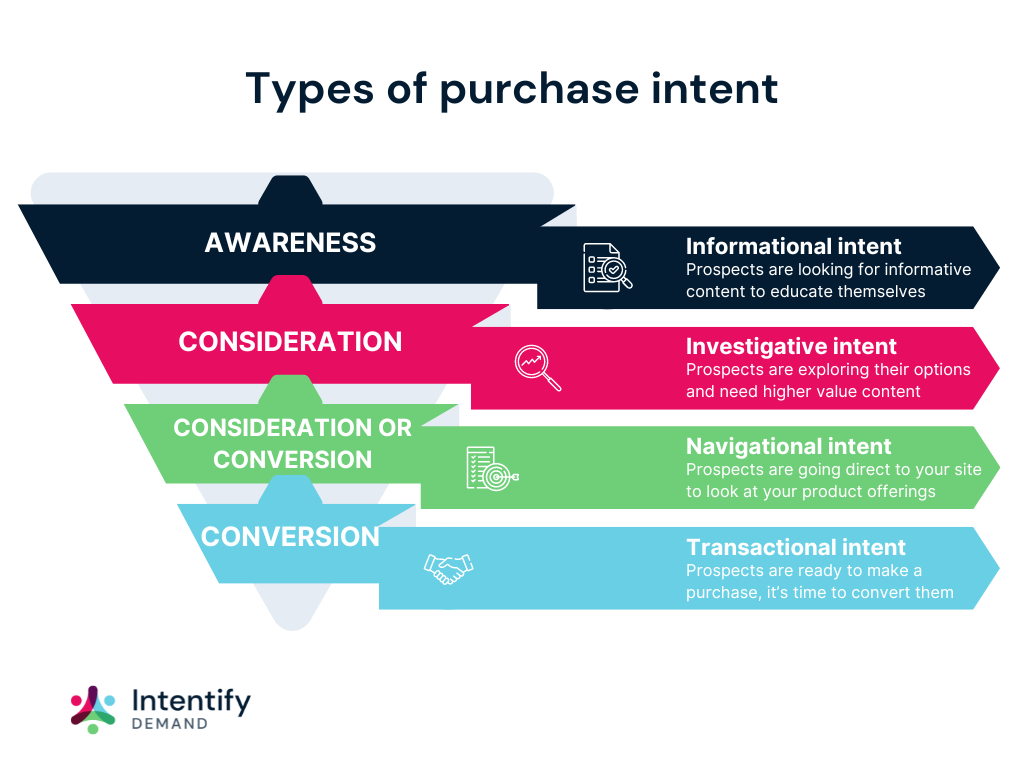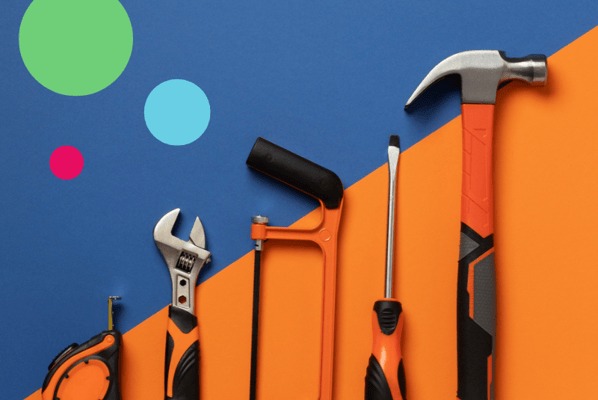Read time: 6 minutes
Generating high quality leads would be almost impossible without high quality content to convert prospects. And when you're throwing all sorts of great content out into the world, but you're not seeing the results then something's got to change.
It's a common issue: content just isn't converting. And while many B2B marketers may find themselves tearing their hair out in frustration, it can be a surprisingly easy fix. All it takes is some clever intent data to help give a clear insight into what's happening in your conversion funnel.
What do we mean by high intent?
The term high intent refers to the intent to purchase. If an individual is showing high intent, it means they're close to making a purchase. And so by measuring intent, marketers can determine how close prospects are to converting, and where they are in the buying journey.
For example, the higher the purchase intent, the closer they are to making a purchase.

You'll also find the term high intent is often used to describe different functions, such as high intent marketing, high intent content, and high intent keywords.
Recommended reading: 26 intent data terms you need to know for B2B marketing
What is high intent marketing?
High intent marketing focuses specifically on potential customers with high purchase intent. While businesses shouldn't rely on this alone, it is important to have dedicated marketing strategies to high intent prospects.
Doing so means these prospects are much more likely to convert if they're nurtured the right way.
What is high intent content?
High intent content is designed specifically for this part of the sales funnel and is used to engage potential customers who are thinking about making a purchase. The purpose of high intent content is to address the core needs and interests of prospects who are actively searching for information related to a particular product or service.
What are high intent keywords?
High intent keywords indicate a strong propensity to buy and can include phrases such as 'buy now' or 'best price for [product]' or 'how to choose the right [service]'.
Recommended reading: Intent signals: The difference between signals and high intent
The power of intent keywords
As mentioned, high-intent keywords show a lead has the intention of buying soon. Therefore, matching your content, whether that's downloadable PDFs, webinars or detailed thought leadership blog posts, to the keywords you've identified gives potential buyers the information they need to bring them closer to a sale.
For this, you need to focus on long-tail keywords that are more detailed questions or phrases a customer is searching for. They have a lower search volume, but higher intent. These keywords give you an opportunity to discover new niches nobody else has answered yet.
For example, ‘project management tool' might be a head term with lots of monthly searches, but it's very general. ‘How to use project management tools for budget planning' is much more specific and suggests a lead has a defined problem they're ready to solve. Many marketers will avoid long-tail keywords due to the lower search volume, but don't make this mistake; long-tail keywords often signal an individual is further along the sales funnel and, therefore, more likely to convert.
Once you've been able to establish which keywords show high intent, you can then evaluate your content to determine which of these search terms have been addressed. It's then important to look at the quality of the content and where it sits in the conversion funnel. For example, does it provide enough detail and depth on the topic to satisfy potential buyers? Or does it appear at the top of the funnel and therefore you need to work on filling the content gap?
Connecting with the buyer's journey
A good marketing strategy, and quality collateral to go with it, only works if you understand your customer journey. Knowing what makes your buyers tick can give you valuable insight into what to offer and when.
First, make sure you have your ideal customer profile (ICP) mapped out and that you understand who your buyer personas are. Once you have a good handle on your target audience, you can then begin to look at what you need for each buyer stage.
While it can be tempting to offer a discount right away, you actually need to spend time demonstrating your value first. This can be done with a quality piece of content, like a blog or social post. You can then nurture potential customers with more detailed content in the form of a downloadable PDF, and then bring in product demos or discounts further down the funnel to seal the deal.
Ultimately you (should) know your customers and industry best. Investing some time in understanding what the buying process looks like for your prospects is the best way to engage them at different stages.
Adding a personal touch
74% of marketers say targeted personalisation increases customer engagement, and they see an average increase of 20% in sales when using personalised experiences. - Campaign Monitor
Customers appreciate companies that go the extra mile to make them feel valued. But this needs to go beyond sending out a marketing email with their name at the top. Basic personalisation is no longer a differentiator but a customer expectation. Therefore, it's important to review your personalisation strategy and discover ways to take this one step further.
When working with high intent keywords, you can gain a better understanding of exactly where your prospective customers are in the buying process, which also means you have a better idea of what content they want to see next.
Matching your content to your high intent keywords means you're able to create a clear map of the customer journey. So when an individual interacts with content A, you already know the next logical step is to send them content B.
Sending relevant content that enhances their experience and makes for a smooth purchase journey will only build trust and establish your brand as an expert in your field.
Being proactive in your approach to delivering content means you're more likely to generate high intent leads that convert quicker. It's all about giving them the answers and insight they didn't even realise they were looking for.
Final thoughts
Creating content can sometimes feel like getting lost in the noise. But the secret is to match your high intent content strategy with high intent keywords to create a seamless purchase journey for prospective customers looking for a solution to their problem.
At the end of the day, your assets should inspire your customers with purchase intent to take the plunge. And if you're seeing a low conversion rate, then it's time to investigate and see what's missing. Focusing on high intent keywords, ensuring you have a robust content strategy and combining the two should give you confidence in your strategy and make sure your marketing assets are being used to their fullest potential.
This article was updated 26th February 2024.



